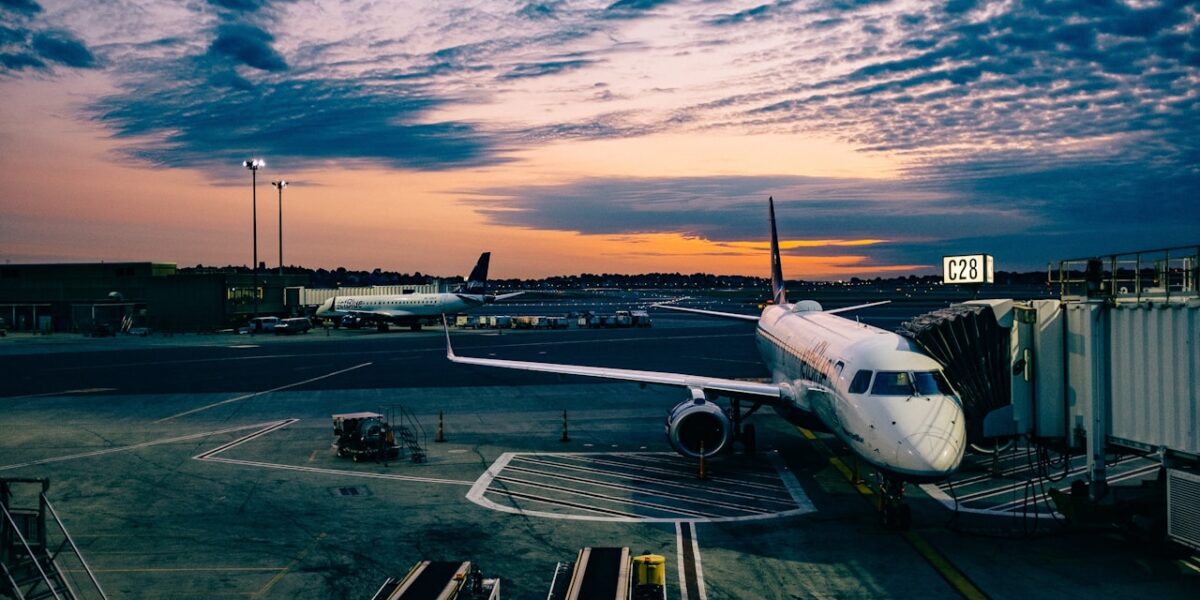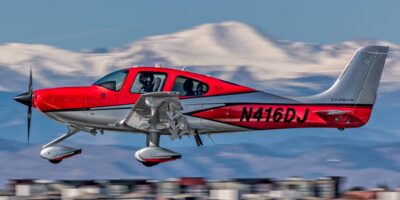eVTOL News
eVTOL News
Electric Vertical Take-Off and Landing (eVTOL) aircraft are transforming the aviation industry. These vehicles are primarily designed for urban air mobility, offering a potential solution to traffic congestion in crowded cities. Major companies, from startups to established aerospace giants, are investing heavily in eVTOL technology.

Leading eVTOL Manufacturers
Several manufacturers are at the forefront of eVTOL development. Joby Aviation, based in California, has been conducting test flights and aims to begin commercial operations by 2024. Lilium, headquartered in Germany, is another contender with its five-seater Lilium Jet. Volocopter, also from Germany, has been testing its VoloCity model and plans to offer air taxi services soon.
Design and Technology
eVTOLs come in various designs, but most rely on distributed electric propulsion. This setup includes multiple rotors to enhance safety and efficiency. Some designs resemble traditional helicopters, while others look more like fixed-wing aircraft with tilting rotors for vertical takeoff and landing. Battery technology is crucial, and advances in solid-state batteries could extend the range and capacity of eVTOLs.
Many eVTOLs incorporate autonomous flight systems to reduce pilot workload and improve safety. Sensors, cameras, and advanced algorithms help navigate complex urban environments. These technologies are collated into a sophisticated flight control system to handle navigation, obstacle avoidance, and landing.
Regulatory Landscape
Regulations for eVTOLs are still evolving. Authorities like the Federal Aviation Administration (FAA) in the United States and the European Union Aviation Safety Agency (EASA) are working on certification processes. These regulations cover airworthiness, pilot training, and operational guidelines to ensure safety.
Noise regulations are another critical aspect. Many eVTOLs are designed to be quieter than traditional helicopters, but they must meet stringent urban noise standards. Community acceptance is vital, and manufacturers are working on designs that minimize sound pollution.
Economic and Environmental Impact
eVTOLs have the potential to revolutionize transportation economics. They could offer a faster, more efficient alternative to ground transport, especially in congested urban areas. This could lead to new business models, such as air taxi services or on-demand flights.
Environmentally, eVTOLs promise lower emissions compared to traditional aircraft. They run on electricity, which can be sourced from renewable energy. The shift could help reduce the carbon footprint of the aviation industry, contributing to global sustainability goals.
Challenges and Future Prospects
Despite the promise, eVTOLs face significant challenges. Battery technology needs improvement for longer flight times and greater range. Urban infrastructure must adapt, with vertiports for takeoff and landing, and integration into existing transportation systems.
Public acceptance is also crucial. People need to trust the safety and reliability of eVTOLs. Ongoing testing and transparent communication will be key to gaining this trust. There’s optimism that eVTOLs could become a common sight in the next decade, changing how we think about urban transportation.
Recent Developments
In recent months, several milestones have been achieved. Joby Aviation received its first certification basis from the FAA, marking a significant step toward commercial operation. Lilium announced successful flight tests of its 7-seater model, expanding its capacity and range.
Volocopter completed its first manned flight in Seoul, showcasing its readiness for urban deployment. Other companies like Archer Aviation and Vertical Aerospace are also progressing, with test flights and new partnerships.
Investment and Market Trends
Investment in eVTOL technology is robust. Venture capital firms, automotive companies, and even tech giants are funding startups. In 2021, Joby Aviation went public through a merger with a special purpose acquisition company (SPAC), raising substantial capital for further development.
The market for eVTOLs is expected to grow exponentially. Analysts predict that urban air mobility could become a multi-billion dollar industry by 2030. Companies are exploring various revenue models, from ride-sharing services to leasing and fleet sales.
Partnerships and Collaborations
Collaboration is common in the eVTOL space. Traditional aerospace companies, like Embraer and Boeing, are partnering with startups to leverage their expertise in manufacturing and certification. Automotive companies, such as Toyota and Hyundai, are also entering the market, bringing experience in mass production and electric vehicle technology.
Public-private partnerships are helping to develop the necessary infrastructure. Cities around the world are working with private companies to build vertiports and integrate eVTOLs into urban planning.
Technological Innovations
Innovation is at the heart of the eVTOL industry. Advances in materials science are leading to lighter, more efficient airframes. Composite materials and additive manufacturing techniques are being used to reduce weight and improve aerodynamics.
Battery technology is also evolving. Solid-state batteries offer higher energy density and faster charging times. Companies like QuantumScape and Solid Power are at the forefront of these developments. Improved batteries could extend the range and reduce the costs of eVTOL operations.
Safety Considerations
Safety is paramount in aviation, and eVTOLs are no exception. Multiple redundant systems are often used to ensure reliability. Many eVTOLs feature multiple rotors, so if one fails, the others can compensate.
Advanced flight control systems enhance safety by automating many aspects of flight. These systems use data from sensors and cameras to make real-time decisions, reducing the chance of human error. Pilot training programs are evolving to include education on these new technologies.
Urban Implementation
For eVTOLs to succeed, cities must adapt. Vertiports, areas designed for vertical takeoff and landing, will be essential. These could be located on rooftops, parking structures, or even dedicated areas on the ground.
Integration with existing transportation networks is crucial. eVTOLs should complement public transit, not replace it. Proper planning can ensure seamless connections between air and ground transport. Smart traffic management systems can coordinate the flow of eVTOLs in urban airspace.
Environmental Concerns
eVTOLs offer potential environmental benefits, but challenges remain. While they produce zero emissions during flight, the source of their electricity matters. Renewable energy is preferable to ensure a truly green solution.
Battery disposal and recycling are other concerns. As the industry scales, sustainable practices will be necessary to handle spent batteries. Ongoing research looks to improve the recyclability of battery materials.
Case Studies
One case study involves Volocopter’s collaboration with the city of Singapore. The pilot project aimed to integrate eVTOL services with the city’s existing transport infrastructure. It highlighted challenges in regulatory approval, public acceptance, and technical hurdles, offering valuable insights for future projects.
Another example is Uber Elevate, which aimed to develop an urban air mobility network. Uber worked with eVTOL manufacturers like Joby Aviation and Bell to develop prototypes and plan routes. Although the program was later acquired by Joby Aviation, the collaborative approach has set a precedent for future urban air mobility initiatives.
Future Trends
The future of eVTOLs could include more autonomous flight capabilities. As technology advances, fully autonomous eVTOLs might become feasible, further reducing costs and improving safety. Hybrid systems combining electric and traditional propulsion could offer greater range and flexibility.
Global expansion is likely as more cities explore urban air mobility solutions. Emerging markets in Asia, Africa, and South America could see significant growth, driven by the need for efficient transport solutions. Policy frameworks and international standards will evolve to support this expansion.
Key Players to Watch
- Joby Aviation: Leading the charge with extensive test flights and strong backing.
- Lilium: Innovator with its unique ducted fan design and ambitious commercial plans.
- Volocopter: Pioneer in urban air mobility with successful test flights and city partnerships.
- Archer Aviation: Partnered with United Airlines to launch urban air mobility services.
- Vertical Aerospace: Advanced in prototype development and securing significant orders.
Public Perception
Convincing the public of eVTOL safety and utility is crucial. Companies are engaging communities through demonstrations and public information campaigns. Transparency about safety measures and regulatory compliance can build trust.
Community engagement programs can help address concerns and highlight benefits. Informing the public about potential time savings and environmental benefits can aid in gaining acceptance.
Conclusion
The landscape for eVTOLs is dynamic and rapidly evolving. With technological advancements and growing investments, eVTOL aircraft are poised to become a significant part of urban transportation. Ongoing developments in regulation, infrastructure, and public acceptance will shape the future of this promising technology.



